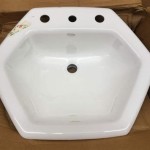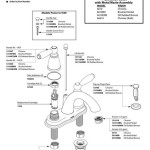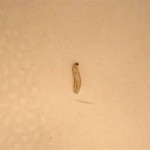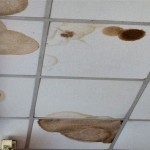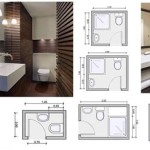Proper Plumbing Under Bathroom Sink
The area beneath the bathroom sink is a vital but often overlooked part of the plumbing system. It's where pipes connect and water flows, and a well-organized and properly functioning system ensures smooth operation and prevents leaks, clogs, and other plumbing issues. This article will explore the essential elements of proper plumbing under the bathroom sink, outlining key components, maintenance practices, and potential troubleshooting steps.
Understanding the Plumbing Components
The plumbing under the bathroom sink typically consists of several components, each playing a critical role in water supply and drainage.
- Supply Lines: These flexible or rigid pipes connect the water supply from the main line to the faucet. They are usually made of copper, PEX, or braided stainless steel. The supply lines incorporate shut-off valves that allow you to isolate water flow to the sink, making repairs easier.
- Faucet: The faucet itself is a vital component, responsible for controlling water flow and temperature. Different styles come with various features, including single-lever, two-handle, and sensor-operated models.
- Drain: The drain is the pathway for wastewater from the sink to the main drain line. It typically consists of a pop-up stopper, a P-trap, and a tailpiece that connects to the drain line.
- P-Trap: The P-trap is a U-shaped pipe that prevents sewer gases from entering the home. It holds a small amount of water, creating a seal that prevents odors.
- Vent: Although not directly under the sink, the vent pipe plays a crucial role in maintaining proper drainage. It connects to the drain line and allows air to enter, preventing air pressure fluctuations that can cause gurgling noises or slow drains.
Essential Plumbing Maintenance
Maintaining the plumbing under the bathroom sink ensures its longevity and prevents potential problems. Here are some essential maintenance tasks:
- Check for Leaks Regularly: Inspect the supply lines, faucet, and drain connections for signs of leaks, such as dripping water, dampness, or rust. Address any leaks promptly, as they can lead to water damage and increase water bills.
- Tighten Connections: Over time, vibrations and temperature changes can loosen connections, leading to leaks. Periodically check and tighten nuts, bolts, and fittings to ensure secure connections.
- Clean the Drain Regularly: Prevent clogs by periodically cleaning hair, debris, and soap scum from the drain. Use a plunger or drain snake to remove obstructions, or consider using a drain cleaner if necessary.
- Inspect P-Trap: Check the P-trap for signs of corrosion or leaks. A leaking P-trap can cause foul odors and water damage. Replace it if necessary.
- Lubricate Moving Parts: Faucet handles, pop-up stoppers, and other moving parts can become stiff over time. Applying a light lubricant like silicone spray can help ensure smooth operation.
By following these essential maintenance practices, you can prevent costly repairs and keep your bathroom sink plumbing in peak condition.
Troubleshooting Common Plumbing Issues
While preventive maintenance is crucial, occasional plumbing issues under the sink are unavoidable. Here's a guide to troubleshooting common problems:
- Leaky Faucet: A leaky faucet can be caused by worn-out O-rings, washers, or cartridges. To fix it, you may need to replace the faulty parts. If the faucet continues to leak, it may require professional repair or replacement.
- Slow Drain: A slow drain is often caused by a clog. Attempt to remove the obstruction using a plunger, drain snake, or a combination of both. If the clog persists, a professional plumber might be needed to address it.
- Gurgling Drain: A gurgling drain indicates a vent problem. The vent pipe may be blocked or obstructed, preventing proper air flow. A professional plumber is usually needed to diagnose and resolve vent issues.
- Running Water: If you hear water running even when the faucet is off, there might be a leak in the supply lines, the shut-off valve, or the faucet itself. Identify the source of the leak and repair it promptly.
By understanding the common plumbing issues and their potential solutions, you can address minor problems yourself or identify when professional assistance is needed.

How To Plumb A Bathroom With Multiple Plumbing Diagrams Hammerpedia

How To Install A Pipe From Sink Drain Wall Ehow

How To Plumb A Bathroom With Multiple Plumbing Diagrams Hammerpedia

Replace A Trap And Add Cleanout Fine Homebuilding

The 10 Most Common Plumbing Mistakes Diyers Make

Bathroom Sink Plumbing Installation Diy Montreal

How To Connect A Bathroom Sink Drain

How To Plumb A Bathroom With Multiple Plumbing Diagrams Hammerpedia

What Is The Bathroom Sink Plumbing Rough In Heights

What Does The U Shaped Pipe Under A Sink Do Wm Henderson
Related Posts
